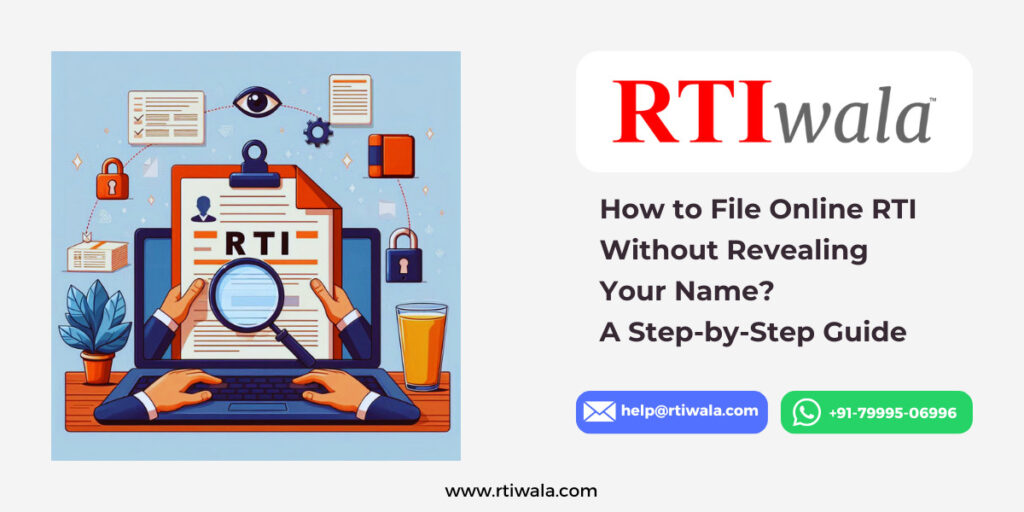The Right to Information (RTI) Act, 2005 was introduced with a strong intent—to promote transparency and accountability in the functioning of public authorities. It empowers citizens to seek information from the government and obligates the government to reply within a stipulated timeframe. Since its inception, lakhs of RTI applications have been filed across the country, uncovering key details in public interest and leading to impactful reforms.
In this comprehensive blog, we will explore everything you need to know about filing an RTI application—from online registration to fee structure, how to track your RTI application status, and what to do if you don’t receive a proper reply. Whether you’re in Maharashtra or elsewhere in India, this guide covers all scenarios systematically.
Also Read:- E Swathu Karnataka 2025: Download Form 9, Form 11 and Form 3
What Is the RTI Act, 2005?
The RTI Act 2005 is a powerful tool that gives Indian citizens the legal right to access information held by public authorities. It mandates timely responses to citizens’ requests for government information, helping curb corruption and ensuring transparency. Every citizen can file an RTI request to central and state government departments, public sector undertakings, and even some NGOs receiving substantial government funding.
Who Can File an RTI Application?
- Any citizen of India can file an RTI application.
- There is no age restriction or educational qualification required.
- NRIs can also file RTI to central government offices (online mode preferred).
Also Read:- What is 8A in Land Records in Maharashtra
How to Register for RTI Applications Online?
To initiate an RTI online registration, you need to follow these steps:
- Visit the RTI online portal – https://rtionline.gov.in (for central govt. departments).
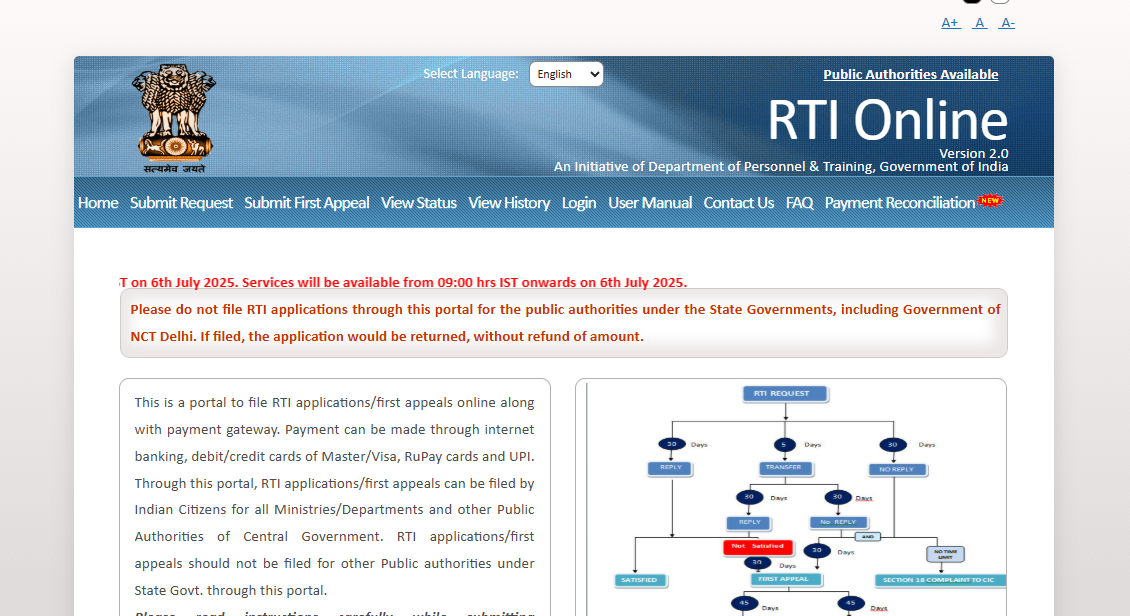
- Click on the “Submit Request” button.
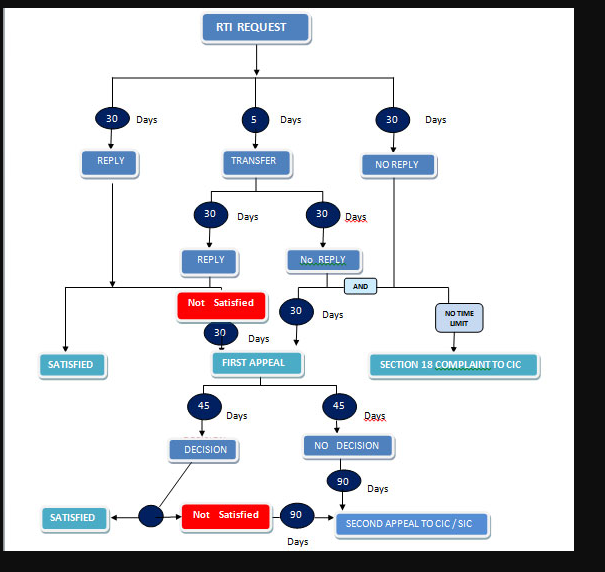
- Read and accept the guidelines.
- Fill out the RTI applications form online, including:
-
- Name and contact details
- Department and public authority name
- Detailed query (limited to 3000 characters)
- Pay the RTI application fee (₹10 for most cases).
- Submit the request and save the registration number for future tracking.
Also Read:- How to Buy E-Stamp in Maharashtra in 2025-26?
How to File RTI Applications in Maharashtra?
Maharashtra has its own RTI online system. Here’s how to apply:
- Visit https://rtionline.maharashtra.gov.in
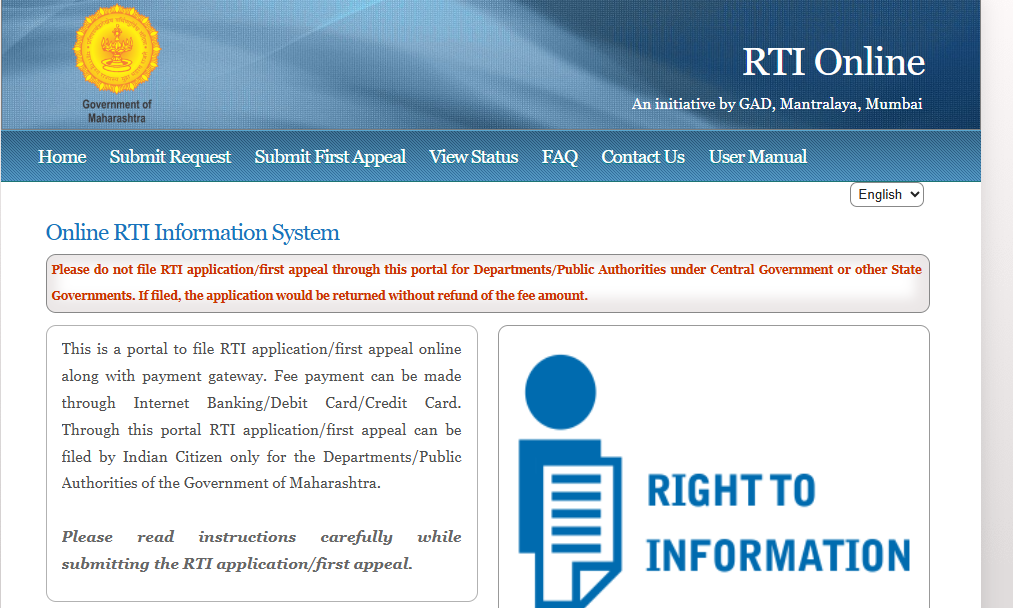
- Click on RTI Online Maharashtra Login or register if you’re a first-time user.
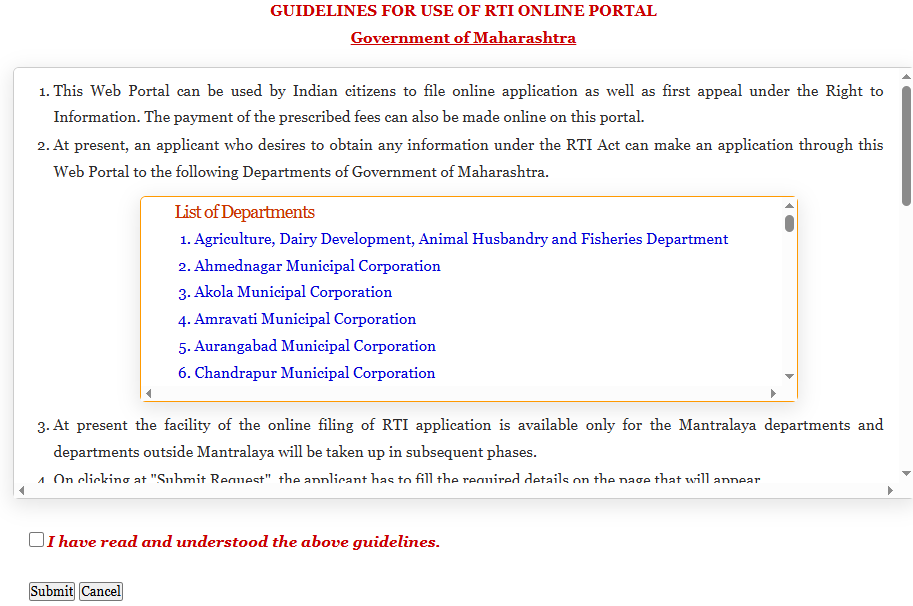
- After logging in, fill out the RTI applications form Maharashtra.
- Upload supporting documents (if needed).
- Pay the required RTI applications fee via online payment gateways.
- Submit and note down the application number.
Also Read:- Bhulekh Mahabhumi Land Record in Maharashtra
How to Download RTI Applications Form?
If you prefer the offline route, you can download the RTI applications form from various government portals. Here’s how:
- Search for RTI applications form download for your state or department.
- Most forms are available in PDF format.
- Fill in your name, address, information sought, and mode of reply (postal/email).
What Is the RTI Applications Format?
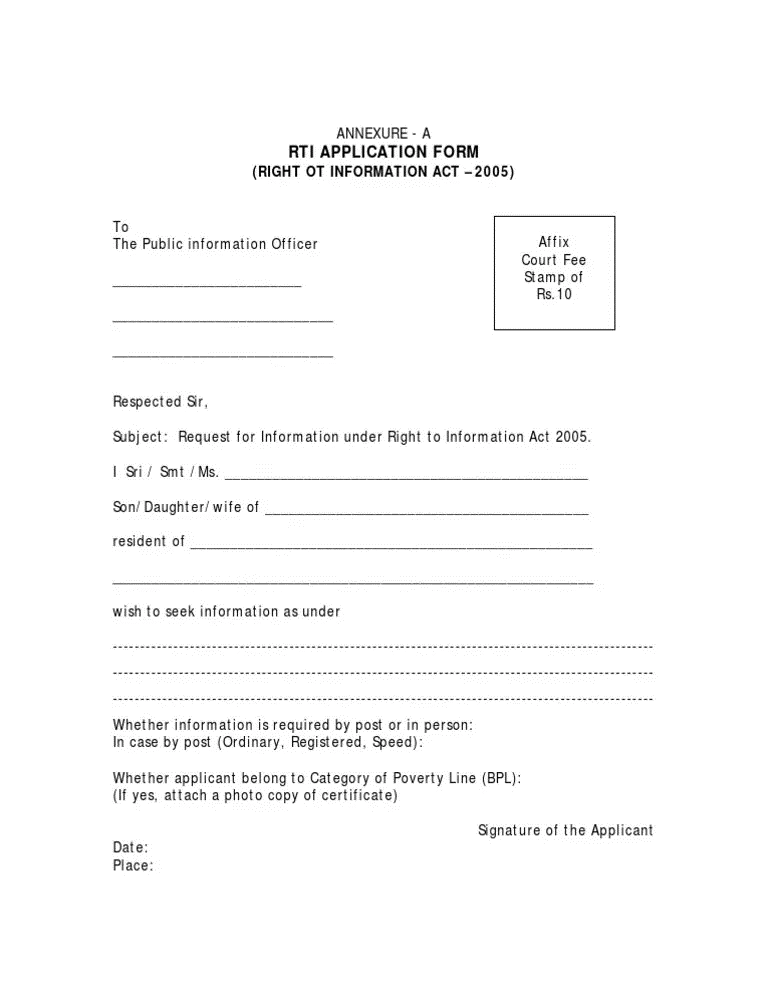
Though there is no rigid RTI application format prescribed by law, a standard application typically includes:
- Applicant’s name and contact information
- Name of the public authority
- Clear and concise information requested
- Application fee (₹10 usually)
- Signature and date
For states like Maharashtra, the RTI application format Maharashtra follows a similar structure, with some variations as per local rules.
Also Read:- Big Win for Maharashtra’s Housing Societies: Deemed Conveyance Goes Fully Digital with PRATYAY MahaBhumi Portal
How Much Is the RTI Applications Fee?
The RTI application fee varies slightly between the central and state governments. Here’s the breakdown:
- Central Government Departments: ₹10 (payable online/offline)
- Maharashtra State RTI: ₹10 via online gateway or court fee stamp for offline
- Additional charges for photocopying (₹2 per page), inspection, or electronic data retrieval
Applicants from BPL (Below Poverty Line) are exempt from paying the application fee, provided they submit a valid BPL certificate.
How to Check RTI Applications Status?
Tracking your RTI is simple and helps ensure timely response:
- Central Govt: Visit https://rtionline.gov.in → “View Status”
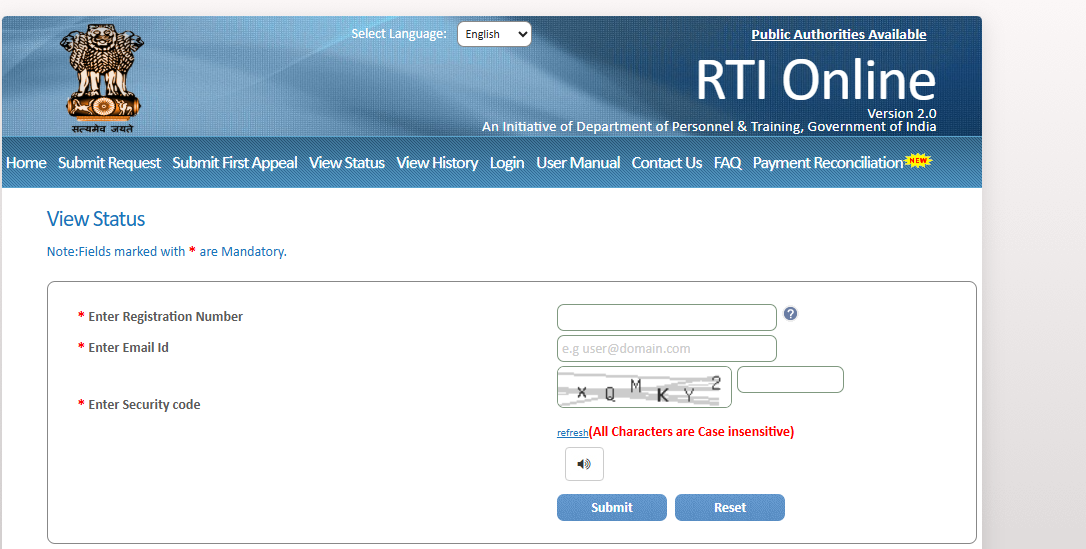
- Enter your RTI registration number and email/phone number
- Click “Submit” to view the RTI applications status
- Maharashtra: Go to RTI online Maharashtra login → Click on “Application Status”
- Enter your unique RTI number to view the latest updates
What Happens After You Submit an RTI Application?
Once you file an RTI, the Public Information Officer (PIO) of the concerned department is bound to:
- Acknowledge the application
- Respond within 30 days (48 hours in life and liberty cases)
- Provide the requested information or state reasons for denial.
Also Read:- Non Occupancy Charges in Society in Maharashtra in 2025
What to Do If There’s No Proper RTI Application Reply?
If you receive an unsatisfactory reply or no response within 30 days, you can file an RTI application reply appeal. The appeal process is as follows:
- First Appeal: File to the First Appellate Authority (FAA) of the same department.
-
- Must be filed within 30 days of the response or due date.
- Second Appeal: File to the Central or State Information Commission if the first appeal is rejected or ignored.
Always quote your original application number and attach a copy of your RTI request and any responses received.
Can I File RTI Applications Offline?
Yes, offline applications are still valid. Steps include:
- Drafting your query on plain paper or downloaded form.
- Attaching a court fee stamp/postal order worth ₹10.
- Posting the application to the PIO of the concerned department.
How Is RTI Used in Real-Life Scenarios?
- Property disputes: Seek land ownership records, layout approvals.
- Government recruitment: Verify merit lists, selection procedures.
- Public services: Enquire about water, roads, and sanitation status.
- Education: Ask about school funding, teacher appointments.
Also Read:- MahaRERA 2025: RERA Maharashtra Registration, Complaint, Projects & Agents
Why Is the RTI Act So Powerful?
Because it arms every citizen with the ability to hold public servants accountable, the RTI Act has led to uncovering scams, delays in public work, and even helped common citizens get their dues faster.
Challenges with RTI Applications
- Some departments are non-responsive
- Delayed replies or vague answers
- Appeals can be time-consuming
- Digital literacy barrier in rural areas
How to Make Sure Your RTI Is Effective?
- Be precise and avoid long-winded questions.
- Focus on asking for information, not raising grievances.
- Mention time frame or document specifics where possible.
Also Read:- IGR Maharashtra Online Search 2024: Documents | Registration | Rules
Conclusion
Filing an RTI application—whether online or offline—is your fundamental right under the RTI Act 2005. It helps uncover critical information that often stays hidden behind bureaucratic layers. Whether you’re looking to question your municipal authority, inquire about public projects, or need clarity on your pending applications in Maharashtra or elsewhere, the RTI is your strongest ally.
Housiey.com believes in complete transparency—not just in governance but also in real estate. That’s why we help our clients directly connect with top builders, without circulating contact details to brokers, ensuring a smoother, more reliable home-buying journey.
If you’re curious about whether it’s safe to buy a property that isn’t registered under RERA, we urge you to check out our detailed blog titled “Can I Buy Property Without Registered on RERA?“—a must-read before making any investment.
FAQs
The Right to Information (RTI) Act, 2005 was introduced with a strong intent—to promote transparency and accountability in the functioning of public authorities. It empowers citizens to seek information from the government and obligates the government to reply within a stipulated timeframe. Since its inception, lakhs of RTI applications have been filed across the country, uncovering key details in public interest and leading to impactful reforms.
In this comprehensive blog, we will explore everything you need to know about filing an RTI application—from online registration to fee structure, how to track your RTI application status, and what to do if you don’t receive a proper reply. Whether you’re in Maharashtra or elsewhere in India, this guide covers all scenarios systematically.
Also Read:- E Swathu Karnataka 2025: Download Form 9, Form 11 and Form 3
What Is the RTI Act, 2005?
The RTI Act 2005 is a powerful tool that gives Indian citizens the legal right to access information held by public authorities. It mandates timely responses to citizens’ requests for government information, helping curb corruption and ensuring transparency. Every citizen can file an RTI request to central and state government departments, public sector undertakings, and even some NGOs receiving substantial government funding.
Who Can File an RTI Application?
- Any citizen of India can file an RTI application.
- There is no age restriction or educational qualification required.
- NRIs can also file RTI to central government offices (online mode preferred).
Also Read:- What is 8A in Land Records in Maharashtra
How to Register for RTI Applications Online?
To initiate an RTI online registration, you need to follow these steps:
- Visit the RTI online portal – https://rtionline.gov.in (for central govt. departments).

- Click on the “Submit Request” button.

- Read and accept the guidelines.
- Fill out the RTI applications form online, including:
-
- Name and contact details
- Department and public authority name
- Detailed query (limited to 3000 characters)
- Pay the RTI application fee (₹10 for most cases).
- Submit the request and save the registration number for future tracking.
Also Read:- How to Buy E-Stamp in Maharashtra in 2025-26?
How to File RTI Applications in Maharashtra?
Maharashtra has its own RTI online system. Here’s how to apply:
- Visit https://rtionline.maharashtra.gov.in

- Click on RTI Online Maharashtra Login or register if you’re a first-time user.

- After logging in, fill out the RTI applications form Maharashtra.
- Upload supporting documents (if needed).
- Pay the required RTI applications fee via online payment gateways.
- Submit and note down the application number.
Also Read:- Bhulekh Mahabhumi Land Record in Maharashtra
How to Download RTI Applications Form?
If you prefer the offline route, you can download the RTI applications form from various government portals. Here’s how:
- Search for RTI applications form download for your state or department.
- Most forms are available in PDF format.
- Fill in your name, address, information sought, and mode of reply (postal/email).
What Is the RTI Applications Format?

Though there is no rigid RTI application format prescribed by law, a standard application typically includes:
- Applicant’s name and contact information
- Name of the public authority
- Clear and concise information requested
- Application fee (₹10 usually)
- Signature and date
For states like Maharashtra, the RTI application format Maharashtra follows a similar structure, with some variations as per local rules.
Also Read:- Big Win for Maharashtra’s Housing Societies: Deemed Conveyance Goes Fully Digital with PRATYAY MahaBhumi Portal
How Much Is the RTI Applications Fee?
The RTI application fee varies slightly between the central and state governments. Here’s the breakdown:
- Central Government Departments: ₹10 (payable online/offline)
- Maharashtra State RTI: ₹10 via online gateway or court fee stamp for offline
- Additional charges for photocopying (₹2 per page), inspection, or electronic data retrieval
Applicants from BPL (Below Poverty Line) are exempt from paying the application fee, provided they submit a valid BPL certificate.
How to Check RTI Applications Status?
Tracking your RTI is simple and helps ensure timely response:
- Central Govt: Visit https://rtionline.gov.in → “View Status”

- Enter your RTI registration number and email/phone number
- Click “Submit” to view the RTI applications status
- Maharashtra: Go to RTI online Maharashtra login → Click on “Application Status”
- Enter your unique RTI number to view the latest updates
What Happens After You Submit an RTI Application?
Once you file an RTI, the Public Information Officer (PIO) of the concerned department is bound to:
- Acknowledge the application
- Respond within 30 days (48 hours in life and liberty cases)
- Provide the requested information or state reasons for denial.
Also Read:- Non Occupancy Charges in Society in Maharashtra in 2025
What to Do If There’s No Proper RTI Application Reply?
If you receive an unsatisfactory reply or no response within 30 days, you can file an RTI application reply appeal. The appeal process is as follows:
- First Appeal: File to the First Appellate Authority (FAA) of the same department.
-
- Must be filed within 30 days of the response or due date.
- Second Appeal: File to the Central or State Information Commission if the first appeal is rejected or ignored.
Always quote your original application number and attach a copy of your RTI request and any responses received.
Can I File RTI Applications Offline?
Yes, offline applications are still valid. Steps include:
- Drafting your query on plain paper or downloaded form.
- Attaching a court fee stamp/postal order worth ₹10.
- Posting the application to the PIO of the concerned department.
How Is RTI Used in Real-Life Scenarios?
- Property disputes: Seek land ownership records, layout approvals.
- Government recruitment: Verify merit lists, selection procedures.
- Public services: Enquire about water, roads, and sanitation status.
- Education: Ask about school funding, teacher appointments.
Also Read:- MahaRERA 2025: RERA Maharashtra Registration, Complaint, Projects & Agents
Why Is the RTI Act So Powerful?
Because it arms every citizen with the ability to hold public servants accountable, the RTI Act has led to uncovering scams, delays in public work, and even helped common citizens get their dues faster.
Challenges with RTI Applications
- Some departments are non-responsive
- Delayed replies or vague answers
- Appeals can be time-consuming
- Digital literacy barrier in rural areas
How to Make Sure Your RTI Is Effective?
- Be precise and avoid long-winded questions.
- Focus on asking for information, not raising grievances.
- Mention time frame or document specifics where possible.
Also Read:- IGR Maharashtra Online Search 2024: Documents | Registration | Rules
Conclusion
Filing an RTI application—whether online or offline—is your fundamental right under the RTI Act 2005. It helps uncover critical information that often stays hidden behind bureaucratic layers. Whether you’re looking to question your municipal authority, inquire about public projects, or need clarity on your pending applications in Maharashtra or elsewhere, the RTI is your strongest ally.
Housiey.com believes in complete transparency—not just in governance but also in real estate. That’s why we help our clients directly connect with top builders, without circulating contact details to brokers, ensuring a smoother, more reliable home-buying journey.
If you’re curious about whether it’s safe to buy a property that isn’t registered under RERA, we urge you to check out our detailed blog titled “Can I Buy Property Without Registered on RERA?“—a must-read before making any investment.
FAQs







